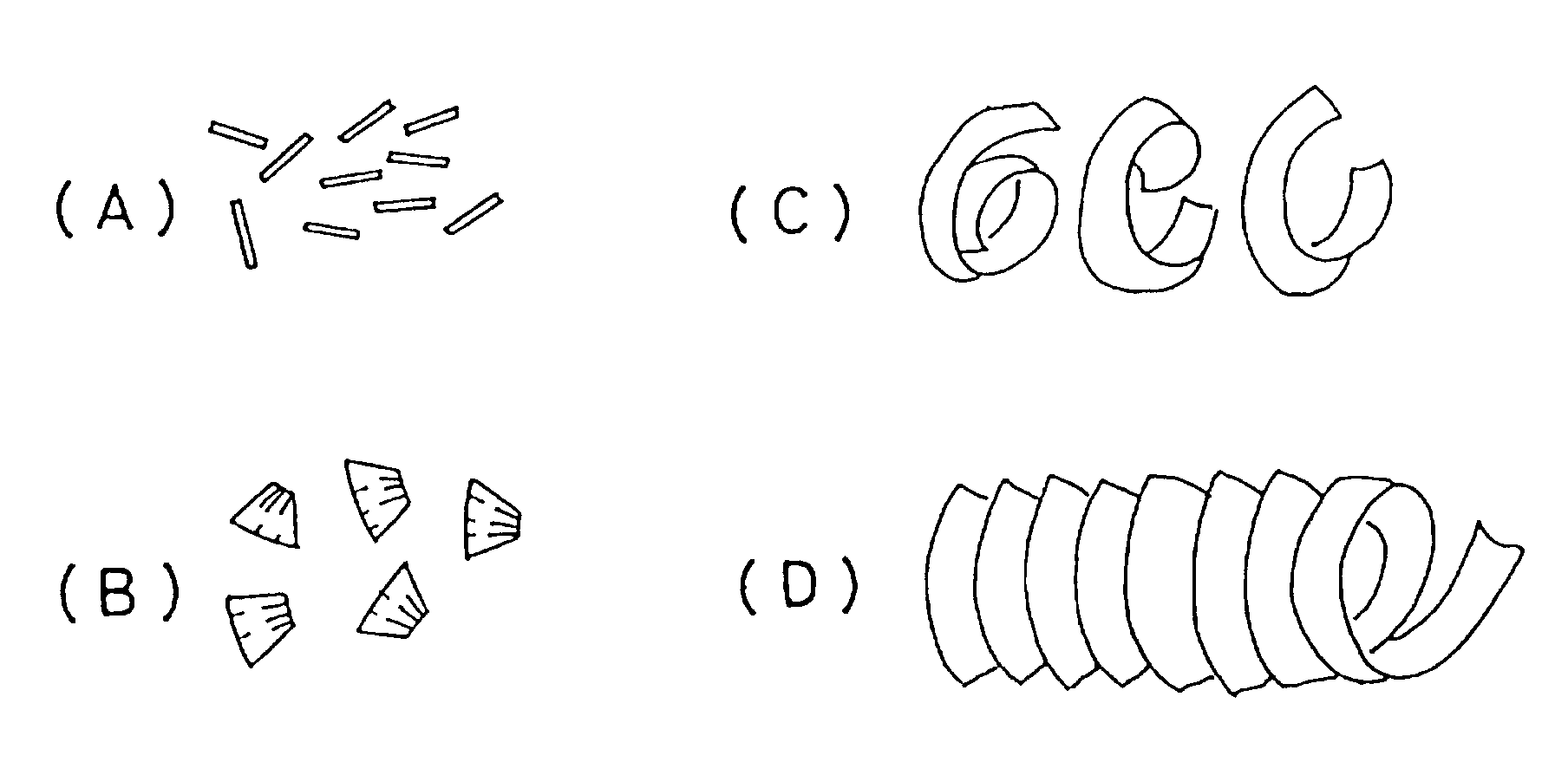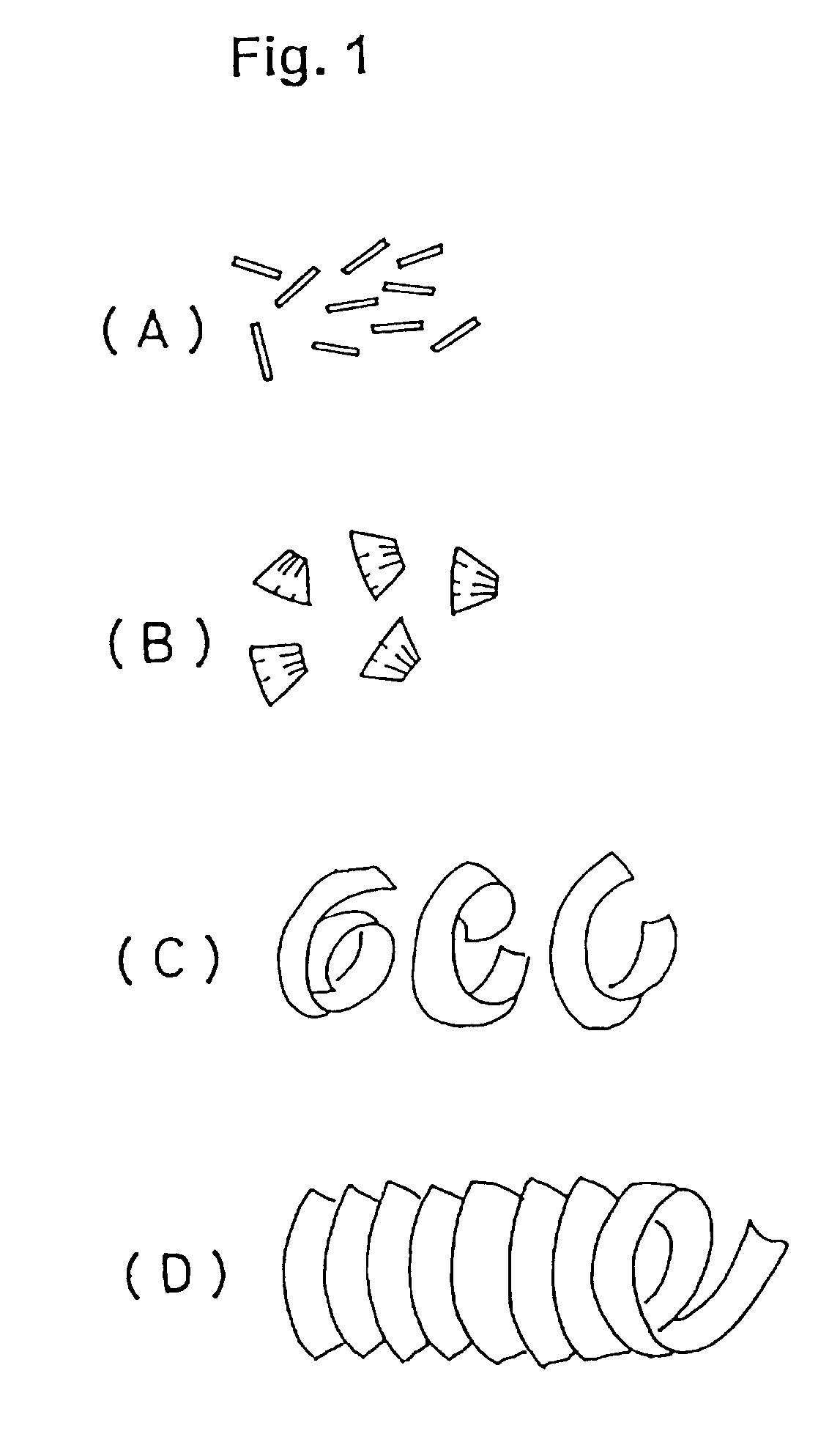Copper/zinc alloys having low levels of lead and good machinability
a technology of copper/zinc alloys and low levels of lead, which is applied in the field of free-cutting copper alloys, can solve the problems of reduced cutting resistance, large application limitations of lead-mixed alloys, rough cutting surface, etc., and achieves excellent machinability and large lead content.
- Summary
- Abstract
- Description
- Claims
- Application Information
AI Technical Summary
Benefits of technology
Problems solved by technology
Method used
Image
Examples
example 1
[0052]As the first series of examples of the present invention, cylindrical ingots with compositions given in Tables 1 to 15, each 100 mm in outside diameter and 150 mm in length, were hot extruded into a round bar 15 mm in outside diameter at 750° C. to produce the following test pieces: first invention alloys Nos. 1001 to 1007, second invention alloys Nos. 2001 to 2006, third invention alloys Nos. 3003 to 3009, fourth invention alloys Nos. 4002 to 4020, fifth invention alloys Nos. 5003 to 5016, sixth invention alloys Nos. 6009 to 6015, seventh invention alloys Nos. 7018 to 7029, eight invention alloys Nos. 8001 to 8008, ninth invention alloys Nos. 9001 to 9006, tenth invention alloys Nos. 10001 to 10008, and eleventh invention alloys Nos. 11001 to 11011. Also, cylindrical ingots with the compositions given in Table 16, each 100 mm in outside diameter and 150 mm in length, were hot extruded into a round bar 15 mm in outside diameter at 750° C. to produce the following test pieces: ...
example 2
[0070]As the second series of examples of the present invention, circular cylindrical ingots with compositions given in Tables 10 and 11, each 100 mm in outside diameter and 200 mm in length, were hot extruded into a round bar 35 mm in outside diameter at 700° C. to produce seventh invention alloys Nos. 70018 to 7029a. In parallel, circular cylindrical ingots with compositions given in Table 17, each 100 mm in outside diameter and 200 mm in length, were hot extruded into a round bar 35 mm in outside diameter at 700° C. to produce the following alloy test pieces: Nos. 13001a to 13006a as second comparative prior art examples (hereinafter referred to as the “conventional alloys). It is noted that the alloys Nos. 7018a to 7029a and Nos. 13001 a to 13006a are identical in composition with the aforesaid copper alloys Nos. 7018 to 7029 and Nos. 13001 to No. 13006, respectively.
[0071]Seventh invention alloys Nos. 7018a to 7029a were subjected to wear resistance tests in comparison with con...
example 3
[0074]In yet another series of tests, first and third invention alloys were examined for impact resistance. Then tin was added to these first and third invention alloys to show the affect of tin on the copper alloys of the present invention.
[0075]In general, mechanical property standards for metals, such as tensile strength, elongation, proof stress, hardness and others, are specified under JIS and ASTM standard. However, a measurement of metal impact resistance, such as the Charpy impact value, is not so specified under these standards. However, there are metal products that need to be impact resistant. For example, some products undergo a cutting process followed by a caulking process during manufacture, which requires that the metal material be impact resistant. Relevant product examples include tube connectors called “nipples, metal hinges for furniture, automobile sensors, and the like. To determine the impact resistance of the copper alloys of the present invention and to show...
PUM
| Property | Measurement | Unit |
|---|---|---|
| temperature | aaaaa | aaaaa |
| length | aaaaa | aaaaa |
| length | aaaaa | aaaaa |
Abstract
Description
Claims
Application Information
 Login to View More
Login to View More - R&D
- Intellectual Property
- Life Sciences
- Materials
- Tech Scout
- Unparalleled Data Quality
- Higher Quality Content
- 60% Fewer Hallucinations
Browse by: Latest US Patents, China's latest patents, Technical Efficacy Thesaurus, Application Domain, Technology Topic, Popular Technical Reports.
© 2025 PatSnap. All rights reserved.Legal|Privacy policy|Modern Slavery Act Transparency Statement|Sitemap|About US| Contact US: help@patsnap.com


